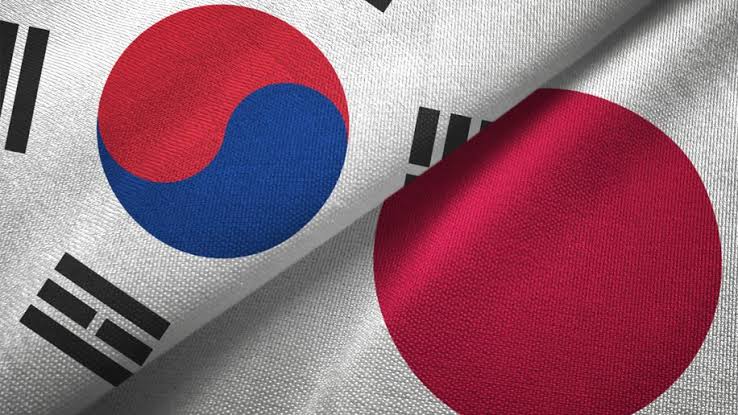Emerging Indo-Pacific Geostrategies: Japan’s National Security Strategy and Korea-ASEAN Solidarity Initiative

Ilustration. Photo by: Business Traveller
Recently, rising security challenges in the Indo-Pacific region have pushed states to pursue new strategies in advancing their national interests. China has considerably pushed for an aggressive military posturing in the South and East China Seas, North Korea’s ambitious ballistic missile experiments has intensified, and Russia is attempting to redirect its external efforts away from the Euro-Atlantic macroregion. Thus, other regional powers like Japan and South Korea are understandably feeling threatened regarding their survival in the face of increasingly hostile neighbours.
Before we delve deeper, what exactly is the “Indo-Pacific”? The term refers to a constructed megaregion stretching all the way from the eastern coasts of Africa to the island clusters of Oceania, first coined by German geopolitical theorist Karl Haushofer in the 1920s to describe the confluence between the Indian and Pacific Oceans (Li, 2021). However, it was not until decades later in the 2010s that the Indo-Pacific became increasingly relevant in academic discourses and policymaking in an effort to spread so-called “universal” liberal-democratic values espoused by the West. The advent of Japan’s “Free and Open Indo-Pacific” (FOIP) vision and the Quadrilateral Security Dialogue put the region back under the spotlight. The Indo-Pacific is now understood as a region with not only significant economic potential, but also sources of possible geopolitical conflict that needs to be anticipated through increased cooperation.
In regards to the increased regional tensions, how did Japan and South Korea respond? In November 2022, South Korea’s president Yoon Seok-yeol unveiled the Korea-ASEAN Solidarity Initiative (KASI) as a framework for security engagement with Southeast Asian countries. One month later in December 2022, Japan published the latest version of its National Security Strategy (NSS), a much-needed update since Japan established its first NSS in 2013. These could be considered their geostrategies—foreign policies guided mainly by geographical considerations—which share several common aspects, mainly in the perceptions of threat in a given region and how the respective countries aim to overcome those threats. This is due to the shifting centre of gravity that redirect global powers’ attention to the region, pushing Japan to increase its defence budget to strengthen its military capability as a response. While for South Korea, this situational development must be addressed by building trust and cooperation with significant regional actors.
Both Japan and South Korea are among major non-NATO allies of the United States. This status brings benefits in military research and development as well as mutual defence, that are otherwise not obtainable by other non-NATO countries. The Japan-US alliance was codified in the ‘Treaty of Mutual Cooperation and Security’ of 1952, marking the end of post-World War II occupation of Japan. The South Korea-US alliance took form in the ‘Mutual Defense Treaty’ of 1953, just after the Korean War was suspended through armistice. These bilateral arrangements helped maintain regional security throughout the Cold War period and have become even more relevant in recent decades with the rise of Chinese military prowess and North Korean nuclear adventurism. On the other hand, prolonged American military presence in Japan and South Korea has also caused concern of security overdependence. However, NSS and KASI reflect the stark contrast in how the two countries respond to such a concern.
Japan’s 2022 NSS underscored the necessity of strengthening its present defence pact with the United States, which it considers to possess “the world’s greatest comprehensive power”, in addition to expanding its own military might. Firstly, Japan wishes to deepen cooperation in cyber and space security realms, carry out more advanced bilateral military exercises, and conduct joint intelligence operations with the US. Interestingly, it also aims to develop counter-strike capabilities as a “minimum necessary measure for self-defence” to complement its ballistic missile defence system. Mounting strikes against enemy territory is viewed as an effective deterrent against any strike on Japan in the first place, though the document made sure to explicitly rule out pre-emptive strikes as “impermissible”. By 2027, Japan will have enough defence prowess to deal with invasions independently. Unprecedented developments in this NSS could also be seen in Japan’s willingness to pump $315 billion to its defence budget over the next five years, even though since 1958 it has confined military spending to about 1% of GDP.
The 2013 version of Japan’s NSS explicitly stated North Korea as the primary source of threat to its national security, followed by China. Japan states its concern about the absence of respect for “universal” liberal democratic values by North Korea and China and their ongoing efforts to rework the regional order through aggressive means. However, the 2022 version of NSS put China in first place. This may be due to the fact that China’s behaviour in recent years has sent more threatening signals for Japan, including increasing its defence spending to develop its military might and advance its missile technologies. These could be used in a manner that may destabilise regional security in the Indo-Pacific and thus threaten Japan’s interests. China’s intense military exercises in the maritime and aerospace realm is also cause for concern.
Meanwhile, South Korea’s response to the ever-present security dynamics of the Indo-Pacific under President Yoon by establishing KASI is relatively moderate compared to Japan. It does not choose to pursue closer relations with the great power directly competing with China— the US. Through KASI, South Korea seeks to find other alternative partners besides the US to develop productive security cooperation. In this case, the South Korean government views ASEAN as a determinant in realising peace and stability in the Indo-Pacific, which in turn directly correlates with the survival and welfare of South Korea (Lee, 2022). In addition to building confidence among regional states, this initiative may also serve to undermine China’s efforts to spread its influence and gain favour with states in Southeast Asia. By doing so, South Korea could also solidify its role as an active middle power, not merely a passive observer.
KASI highlights the importance of Southeast Asia as the geographical centre of the Indo-Pacific. Thus, South Korea acknowledges the necessity of pursuing closer security ties with states in the region through ASEAN in accordance with the principle of ASEAN Centrality. Compared to the previous “New Southern Policy” employed by Yoon’s predecessor Moon Jae-in, KASI places more emphasis on security rather than economic or trade cooperation. It does so by formalising dialogue between South Korea and ASEAN defence officials, in particular regularising the ASEAN-ROK Defence Ministers Meeting. South Korea hopes that KASI could contribute in shaping a freer, more prosperous, and more peaceful Indo-Pacific region, as well as help secure its own survival and prosperity.
Japan’s NSS and South Korea’s KASI would noticeably impact the regional balance of power in the Indo-Pacific, though in slightly different manners. Japan wishes to upgrade its capacity to defend itself through acquiring new military technology, in addition to strengthening security partnerships. Meanwhile, South Korea’s formerly ambivalent position in the great power rivalry has been rectified through KASI, which strongly asserts its agency and support for the US to strive for a free and open Indo-Pacific. It remains to be seen how China—seemingly the main threat to both countries’ regional visions—will shift its Indo-Pacific policy as a response.
Kenzie Ryvantya and Anastasia Artantri Widyautami are students at Universitas Indonesia. They can be found on Instagram with username @kenzie_sr @aawidyautami and Twitter with username @kenzie_sr





